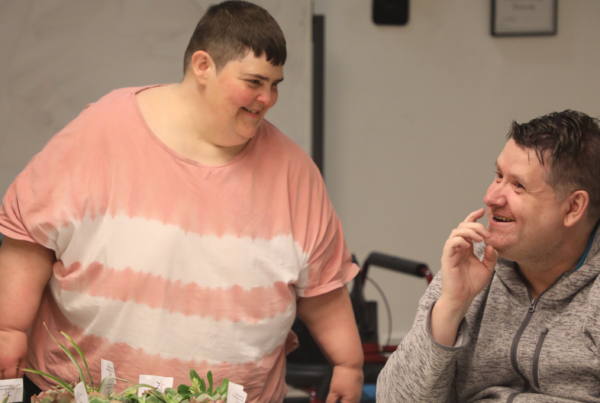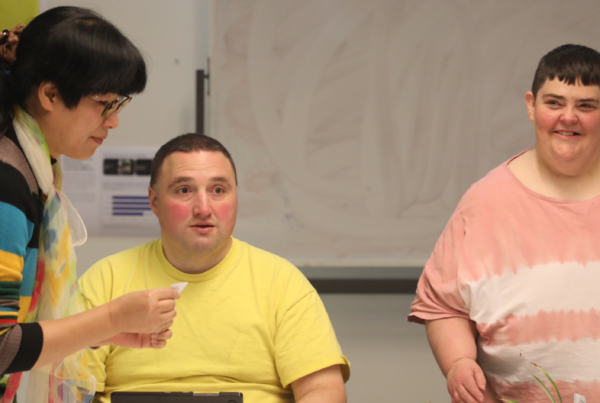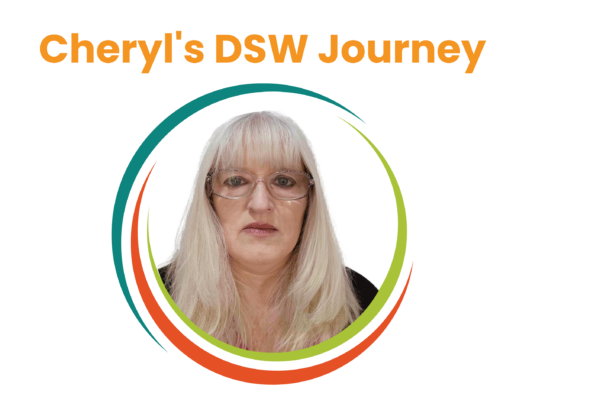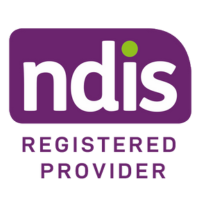Independent Disability Services hosted a seminar about disability and employment recently. Three experts spoke at the event: Rick Kane, CEO of Disability Employment Australia; Mark Glascodine, from Bravo Consulting; and Amanda Lawrie- Jones, Independent Disability Services board member.
The issues raised were complicated, members of the audience weighed in, and a great debate ensued. This article summarises the issues from the day, and asks the question: What needs to change?
“Half of all people with disabilities [in Australia] live near or below the poverty line. Less than 40 per cent of us participate in the workforce…In fact, Australia ranks last among the OECD countries when measured on quality of life for people with disabilities.” – Stella Young, Disability Advocate (1982-2014)
Australia ranks 21st out of 29 Organisation for Economic Co-operation and Development (OECD) countries in employment rates for people with disabilities. And as the late Stella Young pointed out, Australia ranked last out of 27 OECD countries regarding poverty rates among people with disabilities. Why does Australia rank so poorly when it comes to disability and employment? What should we be doing differently?
The OECD’s report Sickness, Disability and Work: Breaking the Barriers (2010) took a long-term look at disability and employment policy across thirteen countries, including Australia. The report found that in Australia almost one in two people with a disability or health issue lives in poverty; the rate is 45% in Australia compared to the OECD average of 22%.
A graph from the OECD report shows that employment rates for people with disability were highest in Sweden, Iceland, Estonia, Mexico and Switzerland. Danish sociologist Gøsta Esping-Andersen has a theory that there are three main types of welfare states in modern capitalist countries: Liberal, Corporatist-Statist, and Social Democratic. The countries with the highest rates of employment for people with disabilities tend to be Social Democratic. Under this model, Australia is Liberal.
In Australia, if you have a disability and you are seeking work you will come into contact with Disability Employment Services (DES). But as shown by the experience of people like Amanda Lawrie-Jones, who experienced discrimination during an interview, DES is in need of an overhaul. At present, people with disabilities are worried that if they start a job, their Disability Support Pension (DSP) will be cut, and if the job doesn’t work out, they will be in a pickle. Mark Glascodine, disability consultant says, “There has now been nothing organised in the discussion about incentivising people on DSP to work: [introducing] a discovery period where you maintain your DSP and other allowances to persuade you to risk your DSP in going for work. That conversation needs to be talked about now.”
In Australia, only 54% of people with disability are employed compared to 83% of people without a disability. The Australian Human Rights Commission published The Willing to Work report which looked at discrimination both in entering the workplace and in the workplace, for people with a disability. CEO of Disability Employment Australia, Rick Kane, summarises the recommendations found in that report, “The expectation of leadership commitment; non-discriminatory recruitment and retention practices; building workplace flexibility; providing targeted education and training in the workplace, and to build healthy workplaces.”
In Australia one-third of employers already employ disabled people, one-third are thinking about it, and one-third don’t want to. So that middle group who are thinking about it are where some solutions lie. However, Rick points out that employers who are aware of the recommendations included in the Willing to Work report don’t know what to do next, “Employers by and large will look at things like the report and wonder ‘Well how do we do those things?”
The biggest barrier for people with disability is stereotypical assumptions and attitudes of employers about what people with disability can and cannot do. Misconceptions include the perceived cost of employing a person with a disability regarding workplace adjustments. (This one is ridiculous when you consider that under the Equal Opportunity Act 2010 it is against the law for public places to be inaccessible to people with a disability.) Another barrier to employment is the employer’s fear that an employee with a disability will take too much sick leave. This misconception fails to take into the account the commitment and drive of some people with disabilities. Viewing someone like Amanda Lawrie-Jones as a liability is missing the point entirely. Another barrier to disability and employment is fear that other people in the workplace will say the wrong thing. This is easily remedied with some basic training; people with disabilities shouldn’t miss out on work because of other people’s ignorance.
Employers can assist people with disabilities by being flexible. Imagine that you are a wheelchair user. Do you want to catch a peak hour train that is packed like a sardine can? No, no you don’t. So why would you expect your employee to do so? Allow some flexibility around start and finish times, or tailor some work from home options. The best way to see if it will work out is to hire a person with a disability and see how it goes. (Judging from the calibre of people with a disability present at the IDS seminar, it will work out).
Mark Glascodine has the following advice for people with a disability seeking employment, “Your disability is one of the things that makes you unique. You’ve got to find the employers who value that.”
Jed Macartney, CEO at Independent Disability Services says, “At IDS we believe there are a lot of very capable people out there who are not being employed simply because they have a disability. We don’t think that is correct and we try and do what little we can to counter that.” IDS employs people with disabilities when they get the opportunity and runs a bookkeeping business that has the aim of employing and training people with a disability to work as bookkeepers. “We are trying to model what our beliefs are,” says Jed.
In a nutshell—people with disabilities should not be excluded from society and barriers to employment should be torn down. Alan, an audience member at the seminar, points out, “The government is more subject to human rights legislation than anybody else. They have an absolute mandate to live up to.” He is right. Disability and employment present many a dilemma for the policy wonks, but as a signatory to The United Nations Convention on the Rights of Persons with Disabilities, the Australian Government has a legal duty to fix the problems of disability and employment in this country.
Listen to the full audio from the IDS Employment Seminar here.
Categories
Do you have a client story you want to share? Get in touch with us via email at: communications@idsa.org.au








